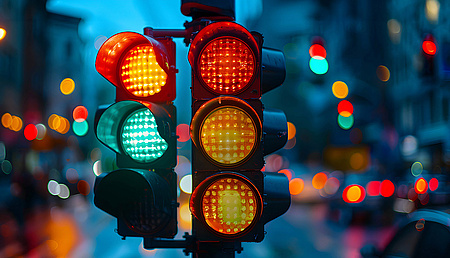
Trademarking a name: considerations and best practices
Choosing the right name for your new company or product is a pivotal decision — it can help solidify your brand identity in customers' minds as much as any logo or other signature art. But you must move carefully if you hope to register that name as part of your Intellectual Property (IP) portfolio.
Continuing our miniseries on trademark registrations, we take a look at what is perhaps the most fundamental aspect of any brand. Names, like slogans, can sometimes be difficult for companies to register as trademarks. In both cases, the simple reason is that only non-descriptive and distinctive examples are eligible for registration. Though applying to register a trademark for a name can sometimes be a fraught process, the enduring IP protection that results from a successful application is a vital tool with which to expand and secure a brand.
If you are seeking to register a trademark in Germany or the European Union, assistance from the experts at the Dennemeyer Munich office will be invaluable, especially if the procedure is drawn out by examiner queries or third-party opposition.
What is a trademark and why do I need one?
Simply put, a trademark is a word, phrase, symbol, design or a combination of these things that designates your goods or services. In Europe, trademarks can even take the form of holograms. Conveniently, this definition also serves to answer the question of their utility: Trademarks are the cornerstone of marketing, identifying your business to your customers. Without trademarks, a recognizable brand identity cannot exist.
The benefits of registering a trademark
It is worth asking yourself if your business needs a full-fledged registered trademark or whether an unregistered one will suffice. If you deliver your goods and services on a smaller scale, you may find that an unregistered trademark is enough to distinguish your offerings from any immediate competition. Take hairdressing as an example. That another salon in another part of the country uses a coincidentally similar name is unlikely to lead to confusion among customers or loss of revenue as clienteles tend to be both local and loyal.
However, if your trademark is not registered, there always exists the risk that someone else will do it first. When this happens, your own business is immediately on the backfoot. Not only is there the possibility that a rival will benefit from the goodwill you have generated, but you could also be legally obstructed from expanding into new markets. By securing your claim to your mark, you will be empowered to prevent competitors from exploiting your branding efforts and take enforcement action against imitators.
As an added bonus, a successful trademark accumulates its own intrinsic value, attracting investment into a growing business or presenting collateral opportunities for loans.
Characteristics of a suitable trademark
Once you have decided on a suitable IP registration strategy, it is critical to come up with a creative name that is likely to stick in the minds of those who hear it. There is no harm in being ambitious here; after all, consumers can even develop sentimental bonds with the most iconic names. While that level of association is not necessary for trademark eligibility, it is certainly worth aspiring to.

A rose by any other name would smell as sweet, but its market performance might not. As your brand's face to the customer, it is vitally important to choose a name that resonates well and is remembered. Do not be afraid to get creative!
In any event, the name you hope to register as a trademark should fall within the parameters of the following categories, as defined by the International Trademark Association (INTA):
- Fanciful marks: Also sometimes described as "coined marks," trademarks are considered fanciful if they are entirely original. Some, like Google, are similar to actual words – in this case, "googly." Others, such as Rolex, are invented out of whole cloth. Most importantly, these marks have no pre-existing associations with the goods or services sold by the companies bearing them, allowing these businesses to create their own connotations with clever marketing.
- Arbitrary marks: These are words that have existing meanings in the languages of the jurisdictions where they are trademarked but are not used in conjunction with those senses. Apple, for example, is an arbitrary trademark because its holder uses it in association with computers, smartphones and other technologies, not fruit.
- Suggestive marks: A mark that hints at a company's goods or services without explicitly stating them would fall under this category. A prime example would be Netflix. Suggestive marks can pass muster with IP offices, but the level of protection will not be ironclad in the way it is for fanciful marks.
By contrast, it is respectively onerous and impossible to obtain trademark protection for the following types of marks:
- Descriptive marks: As the name implies, a mark in this category directly describes some aspect of the product or service it is associated with. (Trademark law in some countries dictates that surnames are descriptive.) Descriptive marks can only be trademarked if, over time, they acquire valid secondary meaning in the consumer consciousness.
- Generic words: Words with a commonly understood single meaning are considered generic. As an example, according to the INTA, "clock" cannot be trademarked in association with timepieces because it is the known word for a device that tells time.
Conducting a thorough trademark search
Once you have a name you think could be a fanciful, arbitrary or suggestive trademark, it is time to look through databases of registered marks to confirm its availability.

A striking name is of little use to you if someone else has already registered a similar one for the same goods and services. A thorough trademark search can avoid the costs associated with disputes and obligatory rebranding.
Start with the IP office of your home jurisdiction, which will have a record of every registered mark in the country or region. For example, the German Patent and Trade Mark Office (DPMA) offers this service through the DPMA Register website. From there, you might want to look at similar databases for other major markets such as those maintained by the United States Patent and Trademark Office (USPTO) and the European Union Intellectual Property Office (EUIPO). The Global Brand Database of the World Intellectual Property Organization (WIPO) might also be helpful in these efforts.
Moreover, keep in mind that assistance from an experienced trademark attorney can help you navigate a trademark search more efficiently.
Next steps in the trademark process
Upon establishing that your name is not an existing trademark and has a reasonable chance of being registered, you can begin the trademark application and filing process.

The best advice when submitting a trademark application is to get it right the first time around as amendments and resubmissions cost time and money. Experts in the field can lend you their knowledge and experience to prevent delays and other setbacks.
There is no foolproof way to guarantee that your application will be successful, but you will increase your odds considerably by following the steps outlined by your local trademark office. For example, virtually all EU member states will expect you to identify what goods and services you want to register your mark for based on the Nice Classification.
You will also want to specify any consistent attributes of your would-be mark: If you format your name in a certain way (using a specific font, color, spacing, etc.), any protection you receive will apply to that precise depiction of the name – or a very similar definition with only minor changes. You can try to register the name on its own as a wordmark, but if you do, it is best that you are fully confident that the name is either fanciful or arbitrary.
At Dennemeyer, we know what is in a name: trusted deliverables, value proposition and consumer confidence. As a global IP service provider, our specialists in Germany and around the world stand ready to handle any trademark filing – so you can be sure your brand reaches your customers and stays out of the hands of copycats.
Filed in

Slight variations in evidence can lead to vastly different outcomes in disputes — and prior decisions cannot be relied on as indicators of success.



